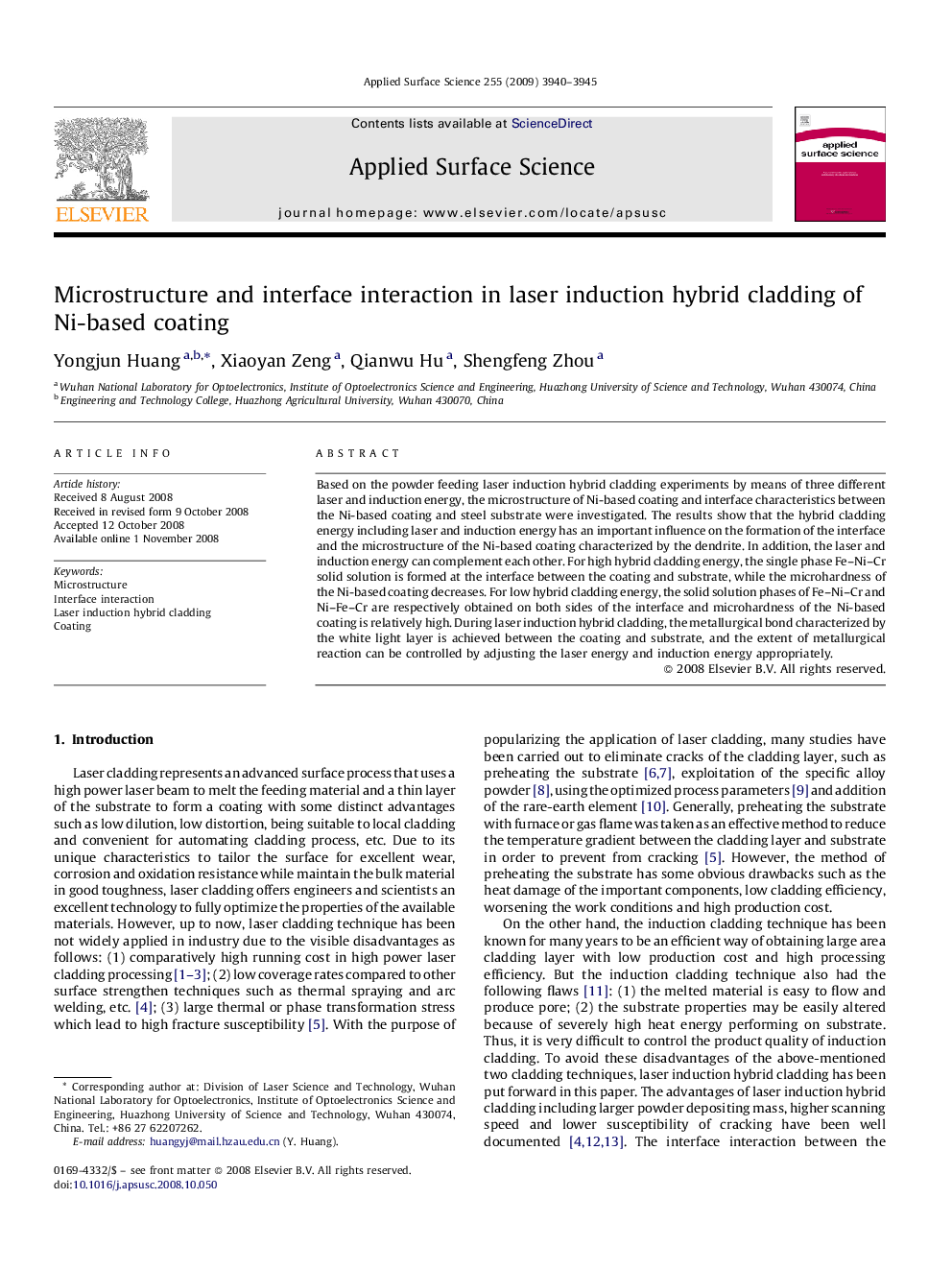| Article ID | Journal | Published Year | Pages | File Type |
|---|---|---|---|---|
| 5364416 | Applied Surface Science | 2009 | 6 Pages |
Abstract
Based on the powder feeding laser induction hybrid cladding experiments by means of three different laser and induction energy, the microstructure of Ni-based coating and interface characteristics between the Ni-based coating and steel substrate were investigated. The results show that the hybrid cladding energy including laser and induction energy has an important influence on the formation of the interface and the microstructure of the Ni-based coating characterized by the dendrite. In addition, the laser and induction energy can complement each other. For high hybrid cladding energy, the single phase Fe-Ni-Cr solid solution is formed at the interface between the coating and substrate, while the microhardness of the Ni-based coating decreases. For low hybrid cladding energy, the solid solution phases of Fe-Ni-Cr and Ni-Fe-Cr are respectively obtained on both sides of the interface and microhardness of the Ni-based coating is relatively high. During laser induction hybrid cladding, the metallurgical bond characterized by the white light layer is achieved between the coating and substrate, and the extent of metallurgical reaction can be controlled by adjusting the laser energy and induction energy appropriately.
Related Topics
Physical Sciences and Engineering
Chemistry
Physical and Theoretical Chemistry
Authors
Yongjun Huang, Xiaoyan Zeng, Qianwu Hu, Shengfeng Zhou,
